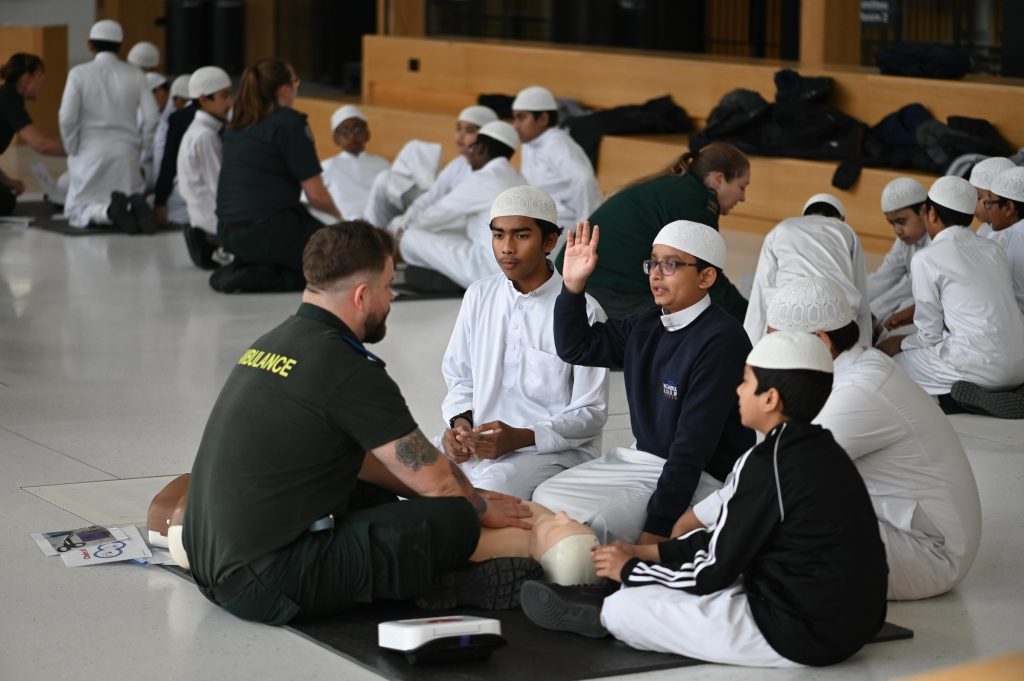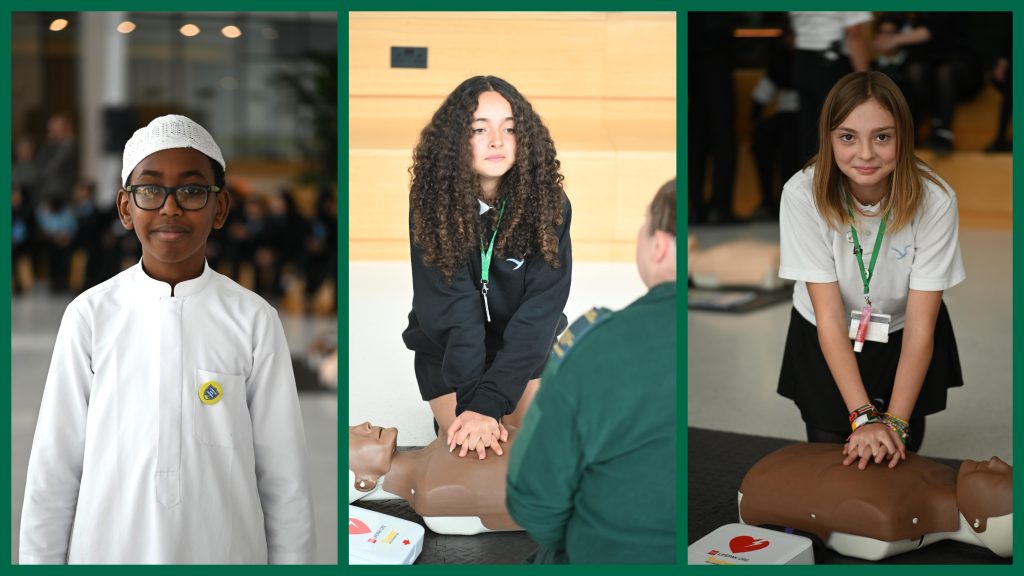London Ambulance Service gives children hands on lessons in saving lives
More than 200 schoolchildren have been taught how to save a life on the first day of an ambitious campaign to create a generation of lifesavers.

A team from London Ambulance Service taught life-saving skills to Year 8 children from schools across London at City Hall in the biggest programme of its kind to target youngsters in the capital.
It is offering the free service to schools as part of a drive to make the capital one of the best cities in the world at responding to cardiac arrest.
Pupil Clelia from a school Hackney, said: “The training was very realistic because a paramedic taught us and we got to have a go giving chest compressions and using the defibrillator.
“It was very thorough and we were taught all the steps – especially to stay calm in an emergency.”
Isabella from Hackney, said: “If something ever happened I would know what to do. It’s not that hard to learn – all children should do this.”
Zackariya said: “It’s really important to teach children what to do in an emergency. Imagine if you’re alone with one of your parents and they go into cardiac arrest. You would be the only person to help and you could save their life.”

This is exactly what teenager Olivia Christofides did when her step-father Geraldo Folie collapsed at home earlier this year. Oliva – who learnt life-saving skills in the scouts – recognised the signs of cardiac arrest and immediately dialled 999 and started giving him chest compressions.
Olivia said: “I learned what to do at Scouts five or six years ago but the training kicked in as soon as I saw Geraldo gasping for breath.
“I’m so happy seeing Geraldo at home now – I see him laugh and tell myself ‘wow, look what I did!’.
“When I learned these skills I never expected to use them but these incidents happen and thanks to London Lifesavers, more lives will be saved.”
Copenhagen, Seattle and Victoria State have proved survival rates improve with increased bystander intervention, where members of the public can recognise the condition quickly, call an ambulance and start chest compressions and defibrillation quickly.
Sam Palfreyman-Jones, Head of First Responders, said: “We know that by teaching life-saving skills in schools and giving children the confidence to use a defibrillator, more lives will be saved in those crucial minutes before an ambulance arrives.
“Most cardiac arrests happen in the home, so we hope to show children that by learning these simple skills, they could save someone they love.”
London Ambulance Service aims to get to two schools a week and teach 80,000 children in the first stage of the campaign. It has used data to target seven ‘wave one’ boroughs: Brent, Barking and Dagenham, Harrow, Newham, Ealing, Redbridge and Enfield, where it has invited schools to take up the training.
To do this, experts analysed cardiac arrest data borough by borough (including higher cardiac arrest incidents, lower rates of bystander CPR, lower survival rates, and fewer defibrillators) as well as demographic data including levels of deprivation.
For example, bystander CPR rates were highest in Waltham Forest, Redbridge and Hackney and lowest in Kensington and Chelsea, Ealing and Southwark. Defibrillator availability is lowest in Waltham Forest, Barking and Dagenham and Hackney and highest in Richmond up Thames, Greenwich and Hillingdon.
LAS Chief Executive Daniel Elkeles said: “We want London to be one of the best cities in the world when it comes to responding to cardiac arrest. The good news is that we have some of the best response ambulance response times in the country for these emergencies but every second counts before an ambulance arrives, and international evidence shows that increasing bystander intervention is the key. We need to build a social movement that makes CPR training one of the things that lots of people know how to do and we need to get defibrillators in every corner of the city.”
Early chest compressions and the use of a defibrillator can more than double someone’s chances of survival.
As part of the campaign, LAS is also seeking to get thousands more defibrillators into communities where they can start saving lives. This week, City Hall, LAS and Transport for London (TfL) completed a massive joint rollout of defibrillators across the transport network, which includes most main bus stations and piers.
The London Lifesavers team also train members of the public at pop-up events across London and offer training to businesses, charities and community organisations.

Follow us on social media: